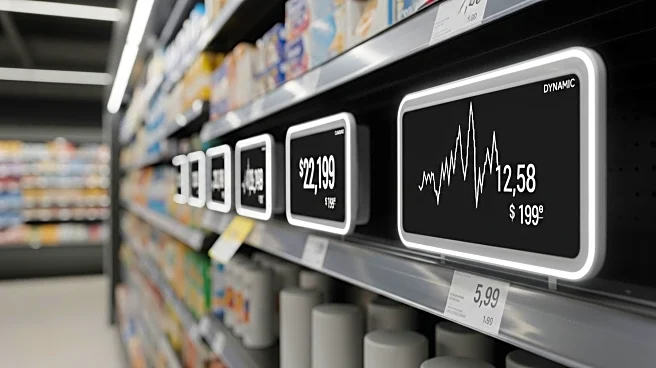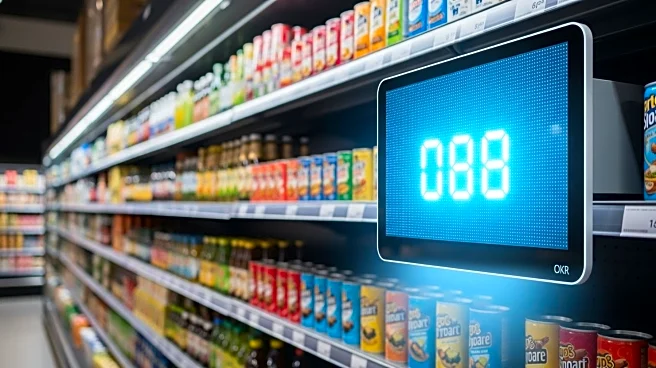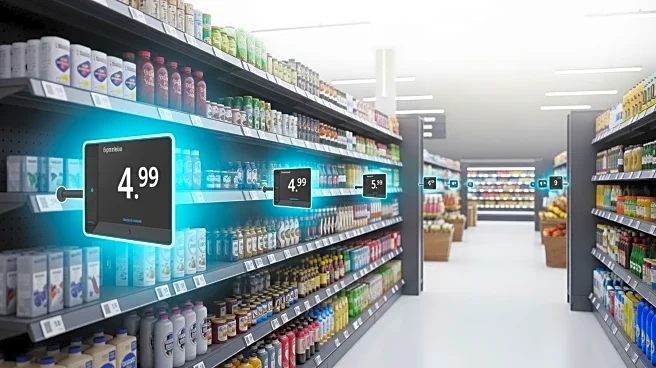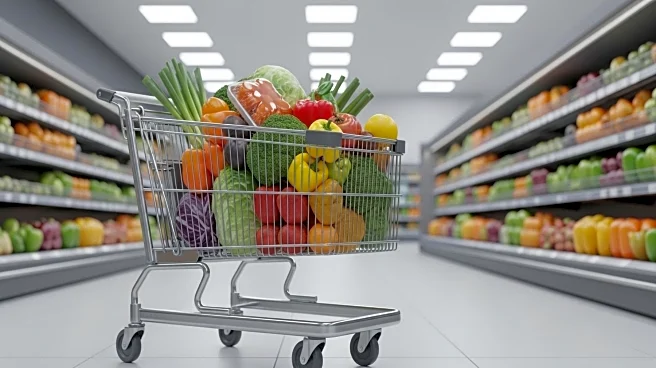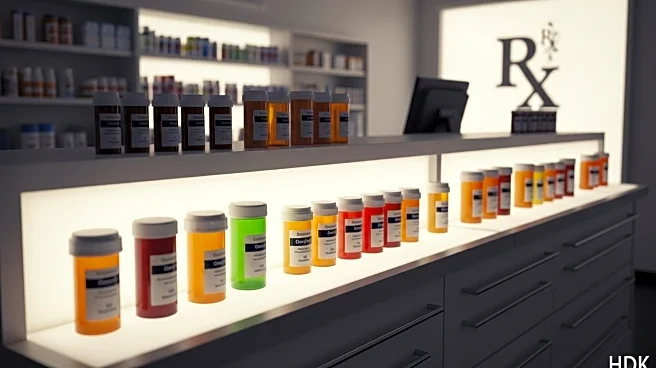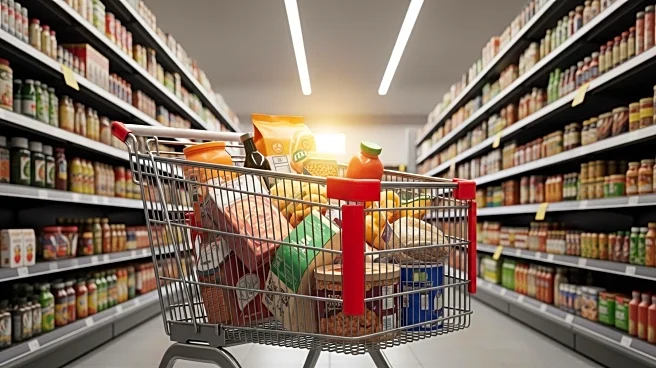What's Happening?
Electronic shelf labels are increasingly replacing traditional paper price tags in U.S. grocery stores, with major retailers like Whole Foods, Amazon Fresh, and Kroger adopting the technology. These digital price tags allow for quick price updates via mobile apps, significantly reducing the time required for price changes. The global market for electronic shelf labels is projected to grow substantially, reaching $7.54 billion by 2033. However, there are concerns about potential price manipulation during high-demand periods.
Why It's Important?
The adoption of electronic shelf labels represents a technological advancement in the retail sector, offering operational efficiencies and potential cost savings for grocery stores. This technology enables dynamic pricing, which can optimize inventory management and reduce food waste. However, it also raises concerns about consumer protection, as dynamic pricing could lead to price surges during peak demand times. The balance between technological benefits and ethical considerations will be crucial as more retailers implement this system.
Beyond the Headlines
The shift to electronic shelf labels may prompt regulatory scrutiny to ensure consumer rights are protected. Lawmakers and consumer advocacy groups might push for transparency and safeguards against exploitative pricing practices. Additionally, the technology could influence consumer behavior, as shoppers become more aware of real-time price fluctuations and adjust their purchasing decisions accordingly.

